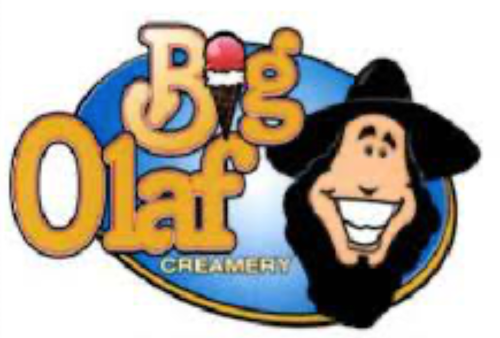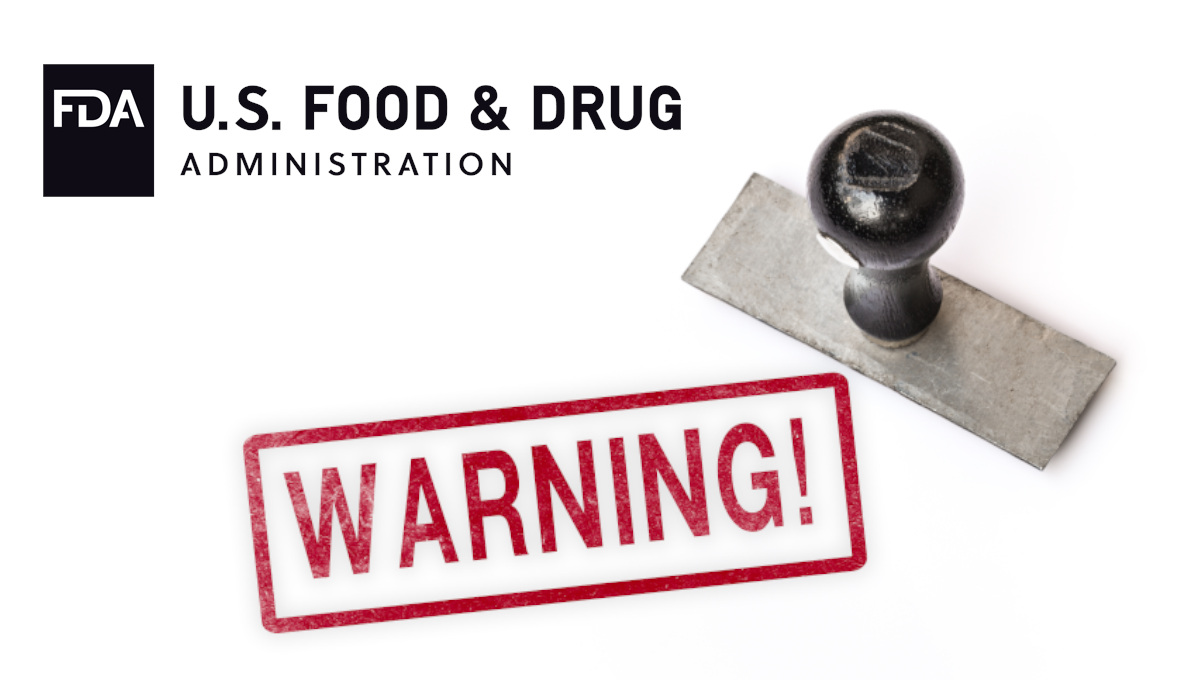As part of its enforcement activities, the Food and Drug Administration sends warning letters to entities under its jurisdiction. Some letters are not posted for public view until weeks or months after they are sent. Business owners have 15 days to respond to FDA warning letters. Warning letters often are not issued until a company has been given months to years to correct problems.
Big Olaf Creamery LLC dba Big Olaf
Sarasota, FL

A food firm in Florida is on notice from the FDA after a facility inspection prompted by a multistate outbreak of Listeria monocytogenes infections linked to ice cream supplied by Big Olaf Creamery LLC’s facility.
According to the Centers for Disease Control and Prevention (CDC), 28 ill people from 11 states were infected with the outbreak strain of L. monocytogenes. One patient died and there was a miscarriage in a pregnant patient. On July 13, 2022, the firm recalled all ice cream products and lots of Big Olaf brand ice cream through June 30, 2022, because they had the potential of being contaminated with L. monocytogenes.
In a Dec. 9, 2022, warning letter, the FDA described a July 19 through Sept. 1, 2022, inspection of Big Olaf Creamery LLC in Sarasota, FL.
The FDA’s inspection revealed that the firm was not in compliance with FDA regulations and resulted in the issuance of an FDA Form 483. Some of the significant violations are as follows:
Multi-state outbreak of Listeriosis linked to Big Olaf ice cream
The CDC, FDA, Florida Department of Health, and Florida Department of Agriculture and Consumer Services (FDACS) investigated this multi-state outbreak of Listeria. monocytogenes infections linked to ice cream produced by Big Olaf Creamery. This investigation determined at least 28 ill people in 11 states were infected with the outbreak strain of Listeria monocytogenes. Whole genome sequencing was performed on Listeria bacteria from the 28 ill people and showed that the Listeria were closely related genetically to one another indicating that ill people became sick from consuming the same food. Fourteen ill people are residents of Florida, and eleven reported traveling to Florida prior to illness onset. Among 28 ill people with available information, 27 were hospitalized, and seven illnesses were in pregnant people or their newborns. One death and one fetal loss attributable to listeriosis have been reported.
In interviews, ill people answered questions about the foods they ate and other exposures in the month before they became ill. Of 23 people interviewed, all reported eating ice cream and 16 specifically reported eating Big Olaf ice cream or at locations supplied by Big Olaf Creamery in the month before their illnesses started; one additional ill person reported eating ice cream more than one month prior to illness onset. It can take up to 70 days for symptoms of Listeria infection to develop.
The overall epidemiologic data, illness sub-cluster information, and food histories of travelers to Florida strongly indicate that Big Olaf Creamery ice cream is the source of illnesses in this outbreak of Listeria monocytogenes infections, according to the warning letter.
Furthermore, on July 7 and 9, 2022, FDACS collected samples (environmental swabs of Big Olaf’s production environment and finished, packaged ice cream product), in which 10 environmental swab isolates and 20 ice cream product isolates match the clinical outbreak isolates from 2022 and 2021 based on WGS analysis.
After the product recall and in response to FDACS’s positive Listeria monocytogenes environmental and finished product samples and FDACS’s stop sale order ceasing all sale of ice cream products, the firm contracted with a third-party laboratory to conduct environmental swabbing (redacted). Multiple pieces of equipment used to manufacture ready-to-eat (RTE) ice cream products were reported positive for Listeria monocytogenes by their contract laboratory, including (redacted). Additionally, four swabs of finished product ice cream buckets (redacted) were reported positive for Listeria monocytogenes.
The presence of Listeria monocytogenes in the firm’s facility and their products is significant in that it demonstrates their sanitation efforts are inadequate to effectively control pathogens in their facility to prevent contamination of food. Appropriate control of Listeria monocytogenes in a food processing environment requires knowledge of the unique characteristics of the organism and implementing the corresponding hygienic practices necessary to control this pathogen.
Hazard Analysis and Risk-Based Preventive Controls (21 CFR Part 117, Subpart C)
1. The firm did not prepare, or have prepared, and implement a food safety plan, as required. The preparation of the food safety plan must be overseen by one or more preventive controls qualified individuals (PCQIs), as required. The firm’s food safety plan must also include the following:
1) Written hazard analysis;
2) Written preventive controls;
3) Written supply-chain program;
4) Written recall plan;
5) Written procedures for monitoring the implementation of the preventive controls;
6) Written corrective action procedures;
7) Written verification procedures.
However, the firm did not have a food safety plan with any of the required elements. For example, they did not conduct a hazard analysis to identify and evaluate known or reasonably foreseeable hazards for each type of the (redacted) different RTE ice cream products manufactured, processed, packed, or held at their facility to determine whether there are any hazards requiring a preventive control.
Also, they did not identify and implement preventive controls to provide assurances that any hazards requiring a preventive control will be significantly minimized or prevented, and the RTE ice cream products manufactured, processed, packed, or held by their facility will not be adulterated or misbranded.
Preventive controls include, as appropriate to the facility and the food, process controls, food allergen controls, sanitation controls, supply-chain controls, and a recall plan. Preventive controls are subject to preventive control management components (monitoring, verification, and corrective actions) as appropriate to ensure the effectiveness of the preventive controls, taking into account the nature of the preventive control and its role in the facility’s food safety system. They must also validate that the preventive controls are adequate to control the hazard as appropriate to the nature of the preventive control and its role in the facility’s food safety system. Specifically, for their RTE ice cream products:
a) The firm did not identify and evaluate contamination with environmental pathogens, such as Listeria monocytogenes, as a known or reasonably foreseeable hazard to determine whether it is a hazard requiring a preventive control. Their facility manufactures RTE ice cream products which are exposed to the environment during processing. The ice cream machine is (redacted). Also, (redacted). The packaged RTE ice cream products (redacted) that would significantly minimize the pathogen. A knowledgeable person manufacturing/processing food in their circumstances would identify contamination with environmental pathogens as a hazard requiring a preventive control (i.e., sanitation controls). Sanitation controls include procedures, practices, and processes to ensure that the facility is maintained in a sanitary condition adequate to significantly minimize or prevent hazards such as environmental pathogens and biological hazards due to employee handling. In addition, note that environmental monitoring is required if contamination of an RTE food with an environmental pathogen is a hazard requiring a preventive control.
b) The firm did not identify and evaluate allergens as a known or reasonably foreseeable hazard to determine whether allergens are a hazard requiring a preventive control. Their facility manufactures (redacted) different RTE milk-based ice cream products, with a variety of flavors and inclusions. Some inclusions contain allergens (such as tree nuts (e.g., pecans), peanuts, and cookie pieces (wheat)). (redacted). In addition, inclusions are (redacted). These bins and scoops (redacted). Therefore, allergens are a known or reasonably foreseeable hazard. A knowledgeable person manufacturing/processing food in their circumstances would identify allergens as a hazard requiring a preventive control. Food allergen controls include procedures, practices, and processes employed for ensuring protection of food from allergen cross-contact (including during storage, handling, and use) and for labeling to ensure that all food allergens required to be declared are included on the label.
c) The firm did not identify and evaluate bacterial pathogens, such as Salmonella, as a known or reasonably foreseeable hazard in certain ingredients to determine whether they require a preventive control. Their process does not apply a (redacted) step to any of their (redacted). A knowledgeable person manufacturing/processing food in their circumstances would identify bacterial pathogens as a hazard requiring a preventive control in these ingredients, and because these hazards are controlled at their suppliers, the appropriate type of control is a supply-chain control. Further, a facility that identifies raw materials and other ingredients with hazards such as bacterial pathogens that require a supply-chain-applied control must establish and implement a risk-based supply-chain program for those raw materials and ingredients. The supply-chain program must include using approved suppliers and conducting supplier verification activities.
During the inspection, the firm provided a draft SOP (standard operating procedure) that included various operational procedures intended to address food safety hazards associated with their manufacturing operations. It included a statement that going forward their firm will (redacted). However, this draft procedure did not fully explain how they will ensure control of hazards requiring a preventive control in their ice cream products.
For example:
- Regarding the hazard of contamination with environmental pathogens, the draft procedure did not describe (redacted). Also, it did not include details of their (redacted).
- Regarding the hazard of allergens, the draft procedure did not describe (redacted). Also, it did not include a (redacted) to ensure the appropriate allergens are declared on labels for each product.
- Regarding the hazard of pathogens associated with ingredients such as nuts, the draft procedure did not (redacted). Also, it did not indicate that they (redacted).
The full warning letter can be viewed here.
(To sign up for a free subscription to Food Safety News, click here)

